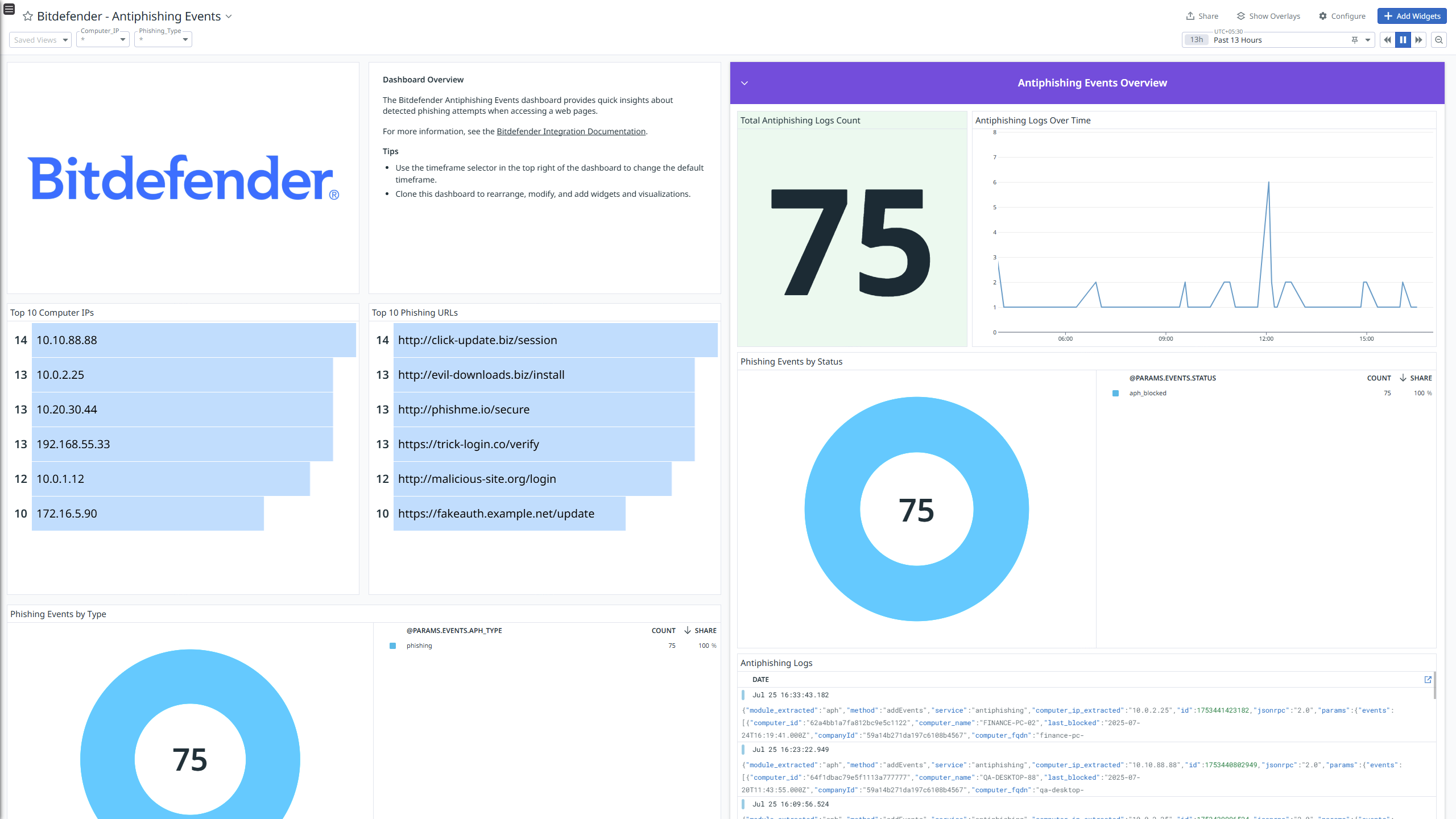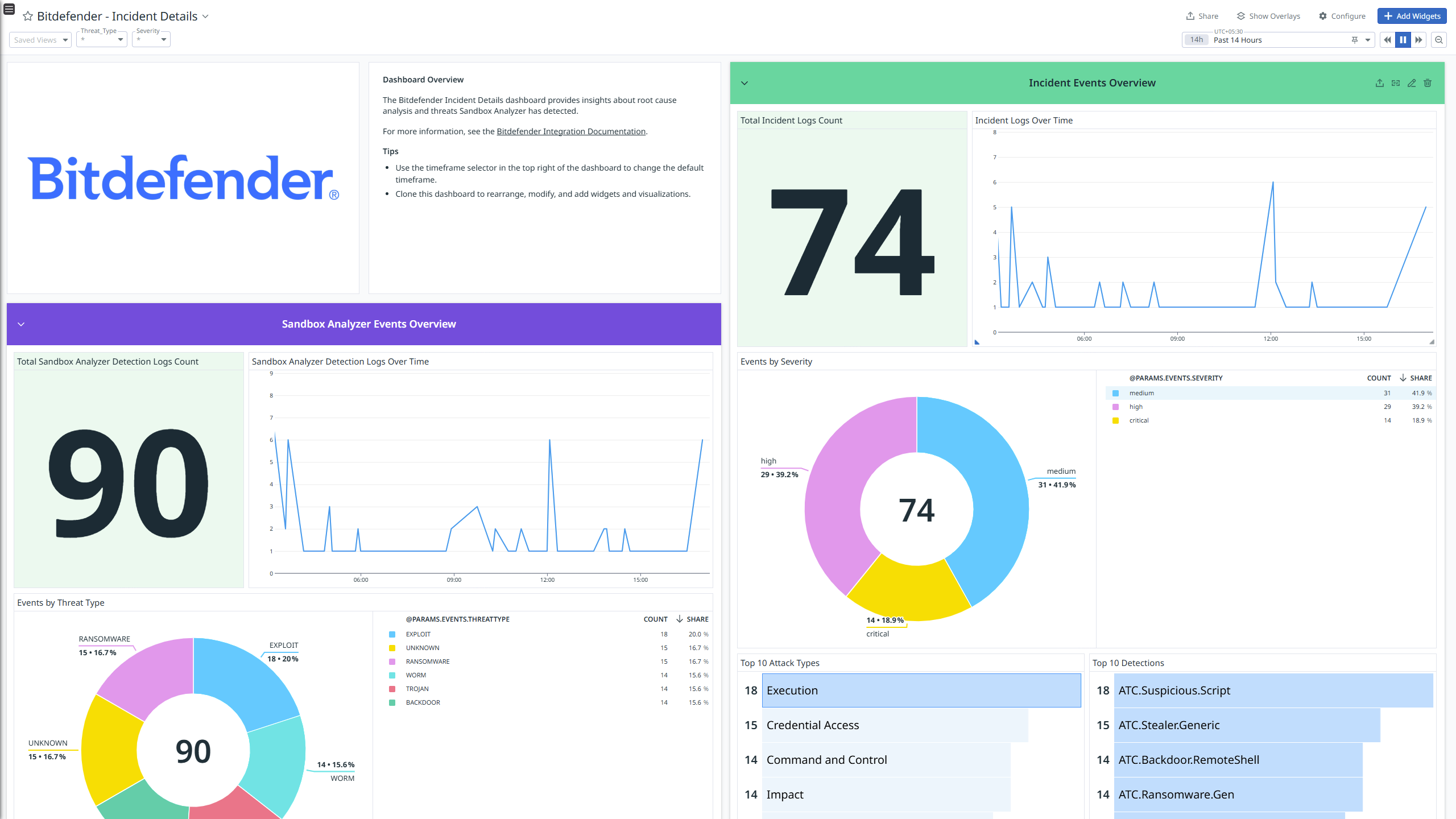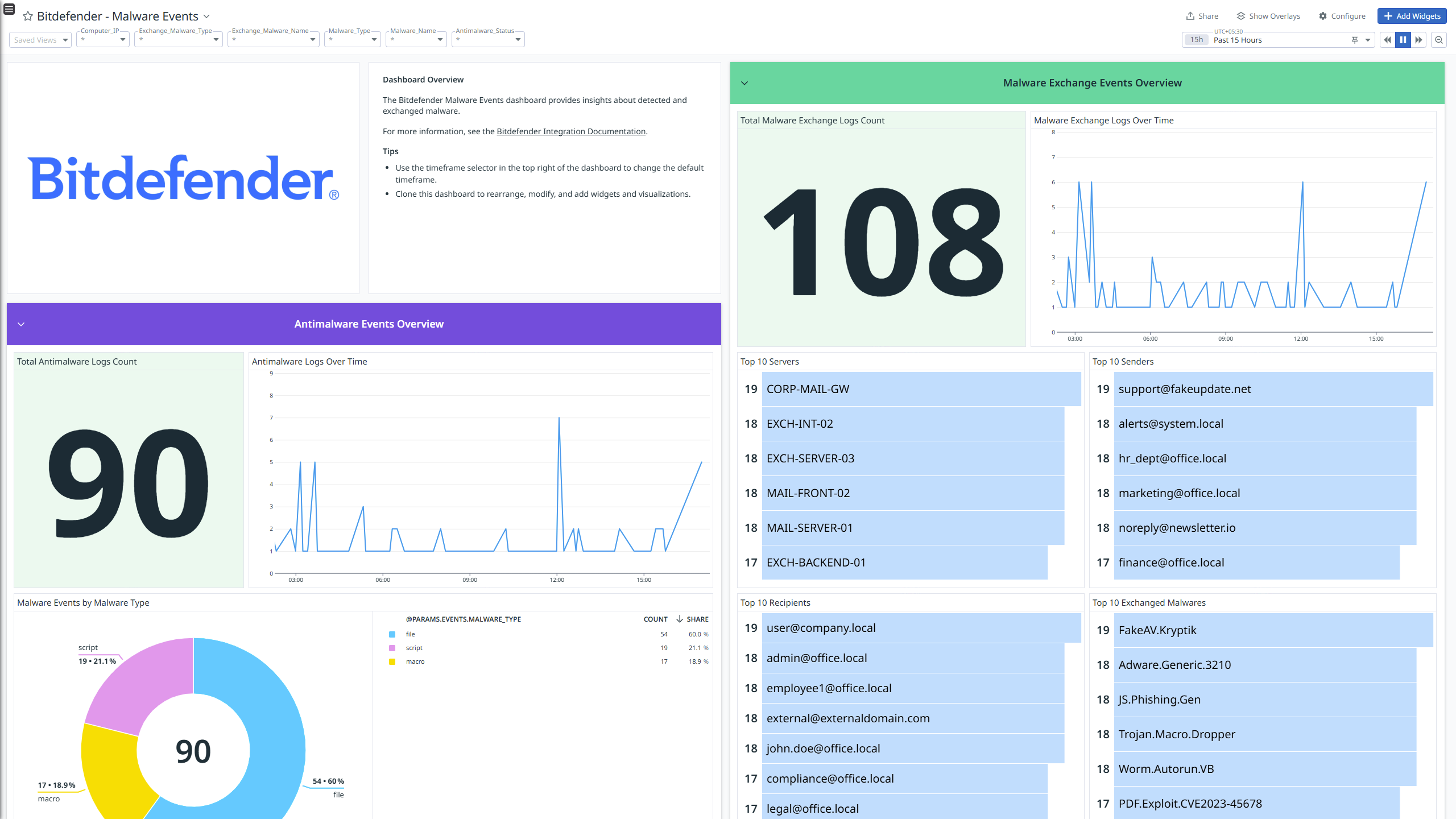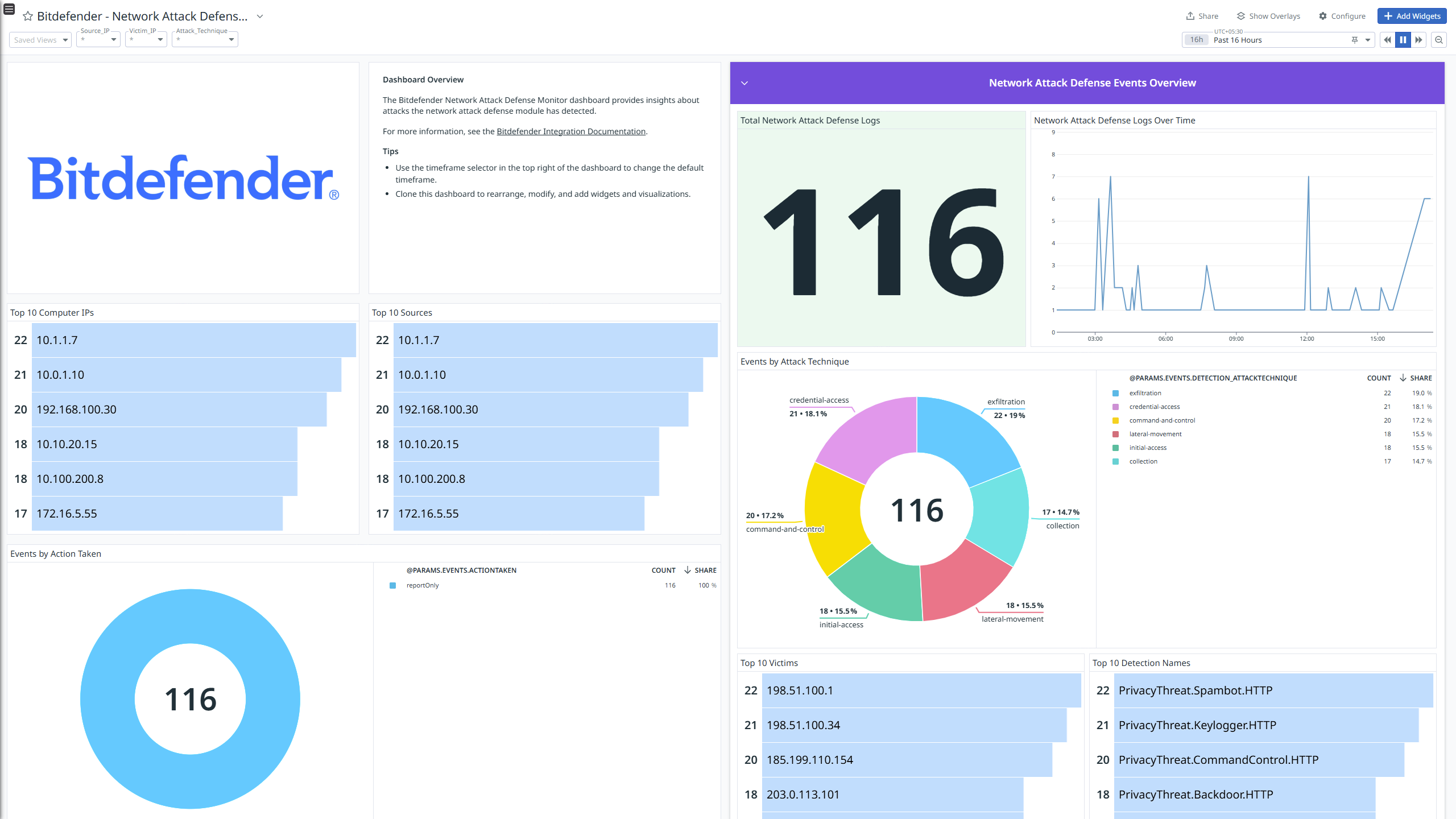- Essentials
- Getting Started
- Agent
- API
- APM Tracing
- Containers
- Dashboards
- Database Monitoring
- Datadog
- Datadog Site
- DevSecOps
- Incident Management
- Integrations
- Internal Developer Portal
- Logs
- Monitors
- Notebooks
- OpenTelemetry
- Profiler
- Search
- Session Replay
- Security
- Serverless for AWS Lambda
- Software Delivery
- Synthetic Monitoring and Testing
- Tags
- Workflow Automation
- Learning Center
- Support
- Glossary
- Standard Attributes
- Guides
- Agent
- Integrations
- Developers
- Authorization
- DogStatsD
- Custom Checks
- Integrations
- Build an Integration with Datadog
- Create an Agent-based Integration
- Create an API-based Integration
- Create a Log Pipeline
- Integration Assets Reference
- Build a Marketplace Offering
- Create an Integration Dashboard
- Create a Monitor Template
- Create a Cloud SIEM Detection Rule
- Install Agent Integration Developer Tool
- Service Checks
- IDE Plugins
- Community
- Guides
- OpenTelemetry
- Administrator's Guide
- API
- Partners
- Datadog Mobile App
- DDSQL Reference
- CoScreen
- CoTerm
- Remote Configuration
- Cloudcraft (Standalone)
- In The App
- Dashboards
- Notebooks
- DDSQL Editor
- Reference Tables
- Sheets
- Monitors and Alerting
- Watchdog
- Metrics
- Bits AI
- Internal Developer Portal
- Error Tracking
- Change Tracking
- Service Management
- Service Level Objectives
- Incident Management
- On-Call
- Status Pages
- Event Management
- Case Management
- Actions & Remediations
- Infrastructure
- Cloudcraft
- Resource Catalog
- Universal Service Monitoring
- End User Device Monitoring
- Hosts
- Containers
- Processes
- Serverless
- Network Monitoring
- Storage Management
- Cloud Cost
- Application Performance
- APM
- APM Terms and Concepts
- Application Instrumentation
- APM Metrics Collection
- Trace Pipeline Configuration
- Correlate Traces with Other Telemetry
- Trace Explorer
- Recommendations
- Code Origin for Spans
- Service Observability
- Endpoint Observability
- Dynamic Instrumentation
- Live Debugger
- Error Tracking
- Data Security
- Guides
- Troubleshooting
- Continuous Profiler
- Database Monitoring
- Agent Integration Overhead
- Setup Architectures
- Setting Up Postgres
- Setting Up MySQL
- Setting Up SQL Server
- Setting Up Oracle
- Setting Up Amazon DocumentDB
- Setting Up MongoDB
- Connecting DBM and Traces
- Data Collected
- Exploring Database Hosts
- Exploring Query Metrics
- Exploring Query Samples
- Exploring Database Schemas
- Exploring Recommendations
- Troubleshooting
- Guides
- Data Streams Monitoring
- Data Jobs Monitoring
- Data Observability
- Digital Experience
- Real User Monitoring
- Synthetic Testing and Monitoring
- Continuous Testing
- Product Analytics
- Software Delivery
- CI Visibility
- CD Visibility
- Deployment Gates
- Test Optimization
- Code Coverage
- PR Gates
- DORA Metrics
- Feature Flags
- Security
- Security Overview
- Cloud SIEM
- Code Security
- Cloud Security
- App and API Protection
- Workload Protection
- Sensitive Data Scanner
- AI Observability
- Log Management
- Administration
Bitdefender
Supported OS
Integration version1.0.0








Bitdefender - Advanced Threat Control Events
Bitdefender - Antiphishing Events
Bitdefender - Hyper Detect Events
Bitdefender - Incident Details
Bitdefender - Malware Events
Bitdefender - Network Attack Defense Event Details
Bitdefender - Overview
Bitdefender - User Control Event Details
Overview
Bitdefender provides cybersecurity solutions with leading security efficacy, performance, and ease of use to small and medium businesses, mid-market enterprises, and consumers. Bitdefender EDR effectively stops ransomware and breaches with automated cross-endpoint correlation and seamlessly integrated prevention, protection, detection, and response.
The Bitdefender integration uses a webhook to ingest Bitdefender EDR logs. The integration provides OOTB dashboards and detection rules for the following event types:
| Event | Trigger |
|---|---|
| Antiphishing | Endpoint agent detects a known phishing attempt when accessing a web page |
| Antimalware | Bitdefender detects malware on an endpoint in your network |
| Advanced Threat Control (ATC) | Potentially dangerous application is detected and blocked on an endpoint |
| Data Protection | Data traffic is blocked on an endpoint, according to data protection rules |
| Exchange Malware Detection | Bitdefender detects malware on an Exchange server in your network |
| Firewall | Endpoint agent blocks a port scan or an application from accessing the network, according to the applied policy |
| Hyper Detect event | Hyper Detect module detects malware |
| Sandbox Analyzer Detection | Sandbox Analyzer detects a new threat among the submitted files |
| Antiexploit Event | Advanced Anti-Exploit triggers a detection |
| Network Attack Defense Event | Network Attack Defense module triggers a detection |
| User Control/Content Control | User activity, such as web browsing of software application, is blocked on the endpoint according to the applied policy |
| Ransomware activity detection | Endpoint agent blocks ransomware attack |
| New Incident | New Root Cause Analysis (RCA) is displayed under the Incidents section of Control Center. The event contains a list of relevant items extracted from the RCA JSON |
Setup
Retrieve the Datadog Webhook URL
- In Datadog, navigate to the Integrations tab, and search for the Bitdefender integration.
- Click the Bitdefender integration. The integration window opens. On the Configure tab, select an existing API key, or create a new one.
- After selecting an API key, click Add API key, then Click Here to Copy URL.
Configure a webhook in Bitdefender
Log in to Bitdefender Business Security Enterprise Portal using an administrator account. Your account must have the following rights:
- Manage Networks
- Manage Users
- Manage Company
- View and analyze data
Click the User menu, then click My Account.
Navigate to the Control Center API section and copy the Access URL.
Navigate to the API keys section.
Click Add. The API Key Configuration window opens.
Provide the following information:
- API Key Description: A relevant name for your API key
- Enabled APIs: Select Event Push Service.
Click Generate and copy the generated API key.
Perform Base64 encoding on the generated API key. You need to use the encoded API key for webhook configuration.
- Take your API key and append a colon (:) to it, like this:
<api_key>: - Encode the resulting string using a Base64 encoder.
For example, if your API key is abc123, the string to encode is
abc123:After Base64 encoding, the result will be something likeYWJjMTIzOg==.- Take your API key and append a colon (:) to it, like this:
Make a curl request. Use the template below, putting values into the following fields:
- <control_center_apis_access_url>: The URL you copied in step 3
- <bitdefender-encoded-api-key>: Your encoded API key from step 8
- <dd-api-key>: Your Datadog API key
- <webhook_url>: The URL you copied in previous section
Retrieve the Datadog Webhook URL- Note: If you’re using Windows, add
^before&ddsourceand&servicein the webhook_url parameter.
- Note: If you’re using Windows, add
- <event-type>: The event type for which logs need to be pushed to Datadog, e.g.
avfor Antimalware- Supported event types:
aph(Antiphishing),av(Antimalware),avc(Advanced Threat Control),dp(Data Protection),exchange-malware(Exchange Malware Detection),fw(Firewall),hd(Hyper Detect event),network-sandboxing(Sandbox Analyzer Detection),antiexploit,network-monitor(Network Attack Defense Event),uc(User Control/Content Control),ransomware-mitigation(Ransomware activity detection),new-incident
- Supported event types:
curl -X POST -k "<control_center_apis_access_url>/v1.0/jsonrpc/push" --header "Authorization: Basic <bitdefender-encoded-api-key>" --header "Content-Type: application/json" --data "{\"params\": {\"status\": 1,\"serviceType\": \"jsonRPC\",\"serviceSettings\": {\"url\": \"<webhook_url>\",\"requireValidSslCertificate\": false,\"authorization\": \"<dd-api-key>\"},\"subscribeToEventTypes\": {\"<event-type>\": true}},\"jsonrpc\": \"2.0\",\"method\": \"setPushEventSettings\",\"id\": 1}"Repeat steps 5-9 for each supported event type you want to push to Datadog.
Data Collected
Logs
The Bitdefender integration collects and forwards Bitdefender logs to Datadog.
Metrics
The Bitdefender integration does not include any metrics.
Events
The Bitdefender integration does not include any events.
Support
For further assistance, contact Datadog Support.
